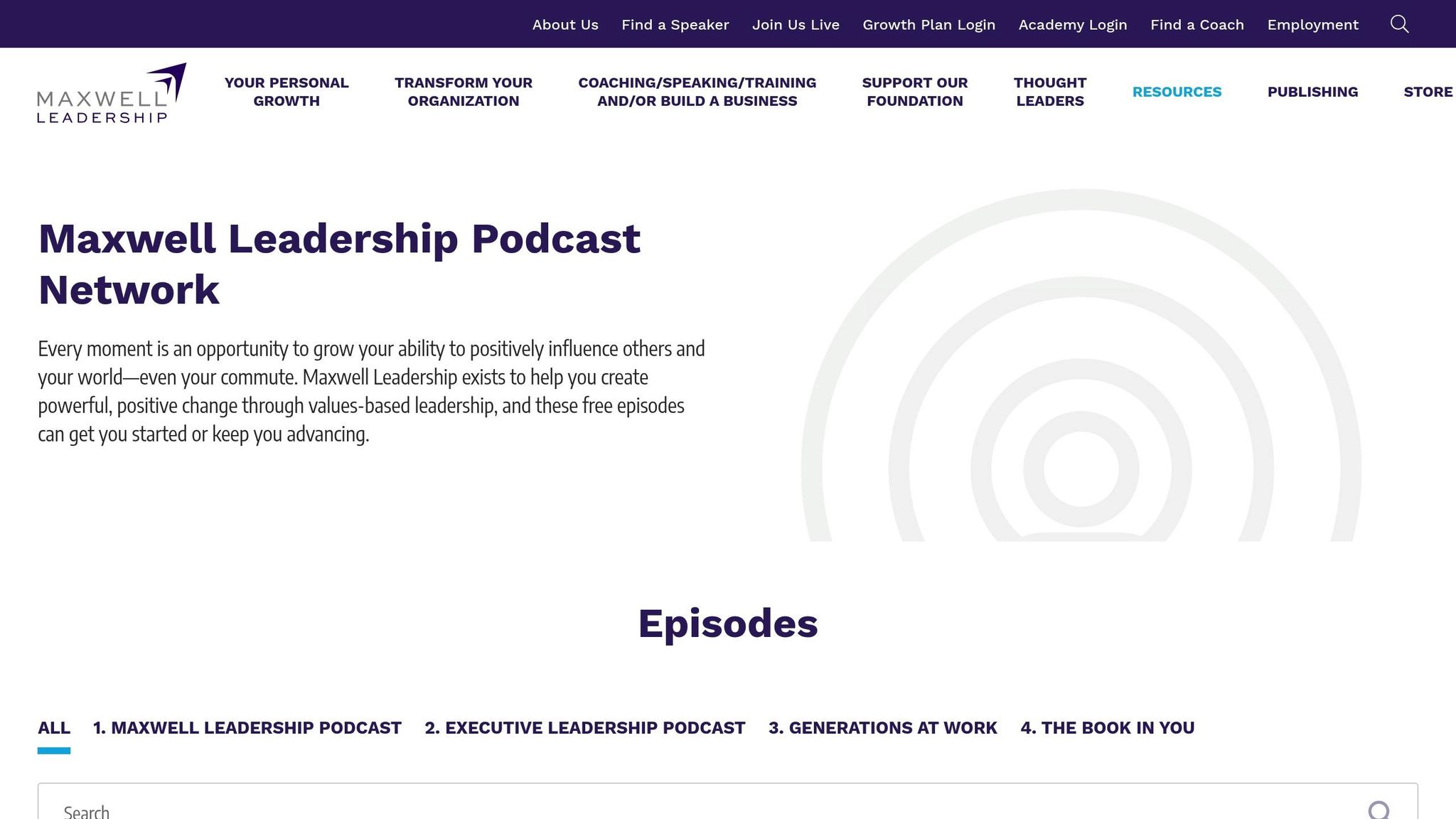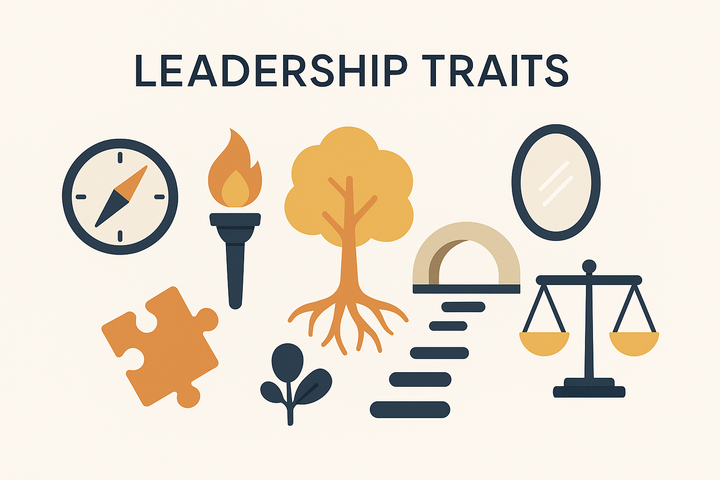When Colleagues Behave Badly: What Should a Leader Do?
Effective leadership in the workplace requires addressing poor behaviour promptly to foster a respectful and productive environment.

Ignoring poor behaviour in the workplace can cost your organisation dearly - both financially and culturally. Workplace conflict in the UK alone racks up £28.5 billion annually, or over £1,000 per employee. Leaders who let disruptive actions slide risk damaging team morale, productivity, and retention. But addressing it effectively? That’s where real leadership shines.
Here’s what you should focus on:
- Spot problem behaviour early: Look for patterns like repeated conflicts, team disengagement, or escalating intensity.
- Decide when to act: Use a mix of informal chats for minor issues and formal procedures for serious misconduct.
- Tackle it head-on: Be clear, specific, and timely in addressing the behaviour - not the person.
- Create a respectful workplace: Clear policies, open communication, and leading by example are your best tools.
Whether it’s managing a micromanaging manager or dealing with unethical actions, the key is to act decisively and constructively. This article is your guide to handling these challenges with confidence and clarity.
Dealing with a Difficult Employee (Maxwell Leadership Executive Podcast)

Spotting Problem Behaviour: When to Act
Workplace friction is inevitable, but knowing when it crosses the line into problematic behaviour is critical. Not every disagreement needs intervention, but certain patterns demand immediate attention from leaders. Recognising these signals helps pinpoint when and how to act.
What Counts as Problem Behaviour
Before stepping in, it’s important to identify the type of behaviour causing issues. Problematic behaviour generally falls into three categories:
- Unethical behaviour: Examples include sexual harassment, fraud, or intentional sabotage.
- Difficult behaviour: This covers actions like rudeness, yelling, shunning, gossiping, constant complaining, refusing directives, or deliberately slowing down work.
- Incivility: Includes insulting remarks, demeaning jokes, or inappropriate conversations.
The distinction lies in whether the behaviour creates manageable challenges for teams or crosses into "bad friction" - the kind that drains energy and stifles progress.
One striking example is Omega Engineering, which suffered a £10 million loss after a fired employee planted a "logic bomb" that wiped out critical files.
Warning Signs That Require Action
Leaders spend up to 40% of their day dealing with workplace conflicts, so recognising early warning signs is crucial. These indicators help determine when to step in:
- Patterns of conflict: Repeated clashes, avoidance among team members, declining productivity, or rising sick leave can all point to deeper issues.
- Shifts in team dynamics: Reduced participation in meetings, reluctance to collaborate, or informal complaints from multiple team members suggest individual behaviour is affecting the group.
- Escalating intensity: What starts as minor disagreements or occasional rudeness can quickly grow into larger problems. Addressing issues early helps maintain team harmony and standards.
Another challenge is that only 40% of employees who witness unethical behaviour report it. This makes it essential for leaders to stay vigilant and proactive in spotting and addressing concerns before they spiral.
Informal vs Formal Issues: Making the Call
Deciding whether to manage an issue informally or escalate it to formal procedures depends on the severity, frequency, and potential consequences of the behaviour. Tailor your approach to the complexity of the situation:
- Informal approaches: Best suited for communication breakdowns, minor personality clashes, or misunderstandings without malicious intent. These situations often improve with direct conversations, clarifying expectations, or offering coaching. When addressing behaviour, focus on the actions rather than the individual. Avoid blame, and instead provide constructive alternatives and guidance.
- Formal procedures: Necessary for violations of company policies, legal concerns, or persistent issues that don’t respond to informal efforts. Serious cases - such as sexual harassment, fraud, sabotage, or discrimination - require immediate involvement from HR.
Timing is critical. Delaying action can breed resentment and worsen the situation. Leaders should address poor behaviour promptly and privately, resolving issues before they escalate and affect the broader team.
Ultimately, the choice between informal and formal measures hinges on whether the behaviour reflects a coachable issue or a fundamental problem that threatens team safety and productivity. Trust your instincts, but don’t wait too long for absolute proof - acting swiftly is often the best course. With clear thresholds in place, leaders can confidently apply the right strategies to address and prevent problem behaviour.
A Simple Framework for Leaders
Dealing with poor behaviour in the workplace requires a structured approach that enables timely and effective action. A clear framework can help leaders manage difficult situations without escalating problems or missing the chance to address them early.
Choosing Your Response: Step Back or Step In
Deciding whether to intervene depends on three main factors: severity, impact, and context. It's important to focus on actions rather than making judgments about character.
- Severity: This refers to the seriousness of the behaviour. While minor issues might resolve on their own, more serious matters - such as harassment, discrimination, or deliberate undermining - demand immediate action. The key question is whether the behaviour violates organisational policies or causes real harm.
- Impact: Consider how the behaviour affects the team. Are there signs of disrupted dynamics, reduced productivity, or an increase in informal complaints? These ripple effects often signal a need for intervention.
- Context: Look at the circumstances surrounding the behaviour. Personal challenges, work stress, unclear expectations, or external pressures may explain certain actions. While context doesn’t excuse poor behaviour, it can guide a more thoughtful and effective response.
Leaders should also examine their own practices. Problems can sometimes stem from unclear expectations, excessive workloads, or insufficient support. By reflecting on these factors, leaders may uncover ways to improve their own management approach.
Ignoring behavioural problems is rarely a good idea, as they can quickly spiral out of control. However, not every situation calls for a formal intervention. Many issues can be resolved effectively through informal, early-stage actions.
Once you've assessed the situation, choose the most appropriate strategy to address the problem.
How to Handle Issues Informally
Informal approaches work best for minor issues, such as communication breakdowns or personality clashes, or when someone may not realise their behaviour is problematic. The aim is to resolve the issue before it escalates while maintaining positive working relationships.
- Prepare: Focus on specific behaviours rather than generalising about the person. Identify observable actions and their impact, and plan for a private, focused discussion.
- Start the Conversation Constructively: Open with neutral language to avoid sounding accusatory. For example, phrases like "I've noticed…" or "I'd like to discuss…" can help set a collaborative tone.
- Listen Actively: Give the individual your full attention and ask thoughtful questions to understand their perspective. Behavioural issues often stem from misunderstandings, unclear expectations, or personal struggles.
- Collaborate on Solutions: Work together to create a plan that addresses the behaviour while considering the individual's circumstances. Provide clear, actionable feedback and set specific expectations for improvement.
- Set Boundaries: Clearly outline acceptable behaviour and the consequences of continued issues. Document agreed actions and expectations to ensure accountability and clarity.
- Follow Up: Regular check-ins can help track progress and provide ongoing support. This consistent engagement often resolves issues more effectively than formal procedures while keeping team morale intact.
If informal efforts don’t work or the issue worsens, a formal approach may be required.
When to Use Formal Procedures
Formal procedures are necessary when informal methods fail, when behaviour breaches company policies, or when there are legal or safety concerns.
- Immediate Action: Serious misconduct - such as harassment, discrimination, fraud, or actions that could lead to legal liability - requires immediate involvement from HR to investigate and document. Informal methods are not suitable in these cases.
- Escalation After Informal Attempts: If informal discussions fail to bring about lasting change, formal disciplinary procedures offer a structured way to address persistent issues. Similarly, clear policy violations need a formal response to maintain consistent standards.
- Adhering to Policies: Employers must follow their internal disciplinary processes and comply with the Acas Code of Practice for disciplinary and grievance procedures to ensure fairness and legal compliance.
- Document Everything: Keep detailed records of incidents, including dates, witnesses, and actions taken. HR’s expertise is especially important when dealing with unionised workforces or legal complexities.
| Informal Approach | Formal Procedures |
|---|---|
| Minor conflicts, communication issues | Policy breaches, serious misconduct |
| Direct conversations and coaching | Structured disciplinary process |
| Collaborative problem-solving | Progressive discipline system |
| Flexible timelines | Requires statutory compliance |
| Maintains relationships | Ensures legal protection |
| Manager-led resolution | HR involvement essential |
This framework provides clear decision points and tools for addressing poor behaviour. Success relies on acting decisively, choosing the right level of intervention, and focusing on the behaviour rather than personal traits - all with the aim of achieving positive outcomes for everyone involved.
Tools for Solving and Preventing Poor Behaviour
To effectively manage workplace conflicts, leaders need tools that not only resolve current issues but also help prevent future problems. Research shows that managers may dedicate up to 40% of their time to handling disputes at work.
Conflict Resolution Methods That Work
Conflict resolution starts with understanding and addressing the root of the problem. The following methods can help leaders navigate and resolve disputes effectively:
- Active listening: This is the cornerstone of resolving conflicts. By giving undivided attention, respecting all viewpoints, and responding thoughtfully, you can uncover the underlying issues driving the disagreement.
- Root cause analysis: Techniques like the 5 Whys - repeatedly asking "why" - help identify the fundamental cause of recurring problems. For instance, if a team member is consistently late, the reason could range from unclear priorities to personal challenges.
- Individual meetings: Before addressing a group conflict, hold confidential one-on-one conversations to understand each person’s perspective.
- Mediated group discussions: Once individual concerns are clear, bring everyone together under agreed ground rules. This ensures all parties feel heard and fosters collaborative solutions.
"You need both parties to agree on what the issue is and discuss needs that aren't being met on both sides. Obtain as much information as possible on each side's outlook. Continue asking questions until you are confident that all the conflicting parties understand the issue."
– Jennifer Herrity
- Collaborative problem-solving: Turn conflict into an opportunity by encouraging team members to work together to find solutions that meet everyone’s core needs. This approach strengthens relationships and reduces the chance of future disputes.
- Follow-up meetings: To ensure lasting resolution, schedule follow-ups to review progress and document outcomes.
These techniques form part of a broader effort to create a workplace culture built on respect and mutual understanding.
Building a Respectful Workplace
Preventing conflict starts with fostering a respectful work environment. Not only does this improve morale, but companies with such cultures also experience 26% higher revenue per employee. Yet, only 65% of workers in the UK feel consistently respected at work.
Here’s how to create and maintain a culture of respect:
- Clear policies and expectations: Establish anti-bullying and harassment policies that outline acceptable behaviour. These policies should be actively integrated into daily operations rather than left to gather dust in handbooks.
- Leading by example: Actions speak louder than words. Leaders who model inclusive and respectful behaviour set the tone for the entire organisation. Addressing microaggressions and showing genuine respect are key.
- Regular training: Keep respect and inclusion at the forefront by incorporating training into team meetings, performance reviews, and development discussions - don’t rely solely on annual sessions.
- Open communication: Create channels for employees to voice concerns, such as one-on-one meetings, anonymous feedback systems, or open team discussions. This helps surface issues before they escalate.
- Recognition and appreciation: Highlight and reward behaviours that contribute to a positive environment. Recognising respectful and collaborative actions encourages others to follow suit.
- Monitoring and accountability: Regularly assess workplace culture through surveys, informal chats, and observations. Address inappropriate behaviour consistently and promptly to ensure policies are more than just words on paper.
Informal vs Formal Approaches: A Comparison
Choosing the right approach to conflict resolution is critical. Informal methods are suited for minor issues, while formal processes are necessary for serious or repeated problems. Here’s a breakdown:
| Aspect | Informal Approach | Formal Approach |
|---|---|---|
| Best Used For | Minor conflicts, communication breakdowns | Policy violations, repeated issues |
| Speed | Quick resolution, often within days | Longer, potentially weeks or months |
| Relationship Impact | Preserves working relationships | May strain relationships |
| Documentation | Minimal record-keeping | Comprehensive documentation required |
| Flexibility | Adaptable to the situation | Adheres to structured procedures |
| Legal Protection | Limited | Stronger compliance |
| Success Rate | Effective for minor issues | Essential for serious cases |
| Cost | Lower, manager-led | Higher, often involving HR |
The choice between informal and formal approaches depends on the severity of the situation. Informal methods are ideal for misunderstandings or personality clashes, while formal procedures are essential for addressing harassment, discrimination, or repeated policy breaches.
If an informal approach doesn’t resolve the issue, transitioning to a formal process may be necessary. Ensure all parties are informed of the change and document each step appropriately.
Conclusion: Leadership's Role in Managing Behaviour
Addressing poor behaviour goes beyond simply fixing problems - it’s about shaping the kind of workplace culture you want to see. As a leader, the standards you tolerate or enforce set the tone for your team. Each decision you make about how to handle difficult behaviour sends a clear and lasting message to everyone.
Your leadership sets the blueprint for how your team functions. By tackling issues promptly and constructively, you not only resolve immediate challenges but also lay the groundwork for a more cohesive and respectful environment. It’s about creating a culture where respect and collaboration thrive, and conflict is addressed before it spirals into something bigger.
A structured approach transforms tough decisions into manageable ones. With a clear process in place, you can confidently decide when and how to step in - whether that means addressing an issue informally or escalating it through formal channels. This approach ensures you’re not relying on instinct or avoiding those tough but necessary conversations.
Leadership often shows its true value in uncomfortable moments. As Verne Harnish, author of Scaling Up, aptly puts it:
"Growth requires change, and change requires tough decisions."
Focusing on behaviour rather than personality, listening to all sides, and following through with consistent action builds trust and reinforces the principle that everyone deserves a respectful workplace. These aren’t just management strategies - they’re commitments to fairness and integrity.
When you apply these strategies, the benefits extend far beyond resolving individual conflicts. Research shows that companies with strong leadership development programmes are 12 times more likely to achieve strong business results and 13 times more likely to outperform their competitors. Handling difficult situations effectively doesn’t just solve problems in the moment - it develops the leadership capabilities that fuel long-term success.
Start by applying the framework, trust the process, and take action. Even small steps are better than allowing poor behaviour to fester. Your team is looking to you to create the workplace they deserve, and now you have the tools to make that vision a reality.
FAQs
How can leaders handle challenging behaviour in the workplace without making the situation worse?
To handle challenging behaviour effectively, leaders need to act quickly yet with care. Begin by observing the situation without bias and take the time to listen, aiming to uncover the underlying cause of the issue. Always address concerns in private, focusing on specific actions rather than personal characteristics, as this helps to prevent defensiveness.
Communicate clearly and calmly, using 'I' statements like 'I’ve noticed...' to share your concerns without sounding confrontational. Outline clear expectations for improvement and offer any necessary support to help achieve those goals. By encouraging open conversation and staying professional, leaders can tackle problems constructively and reduce the chances of further conflict.
What’s the difference between managing workplace conflicts informally and using formal procedures?
Informal conflict management emphasises open dialogue, mediation, and teamwork to address issues swiftly while preserving positive workplace relationships. This approach works well for minor disputes or early-stage disagreements, steering clear of formal documentation and procedures.
On the other hand, formal processes involve defined steps such as filing complaints, conducting thorough investigations, and, in some cases, pursuing legal action. These methods are typically reserved for more serious concerns or situations where informal efforts haven’t resolved the issue, offering a structured and documented path to resolution.
Deciding between these approaches hinges on the seriousness of the conflict and the outcome you’re aiming for. Informal methods tend to be faster and less intrusive, whereas formal procedures ensure a clear, accountable process for handling complex or severe problems.
How can leaders create a respectful workplace culture and minimise poor behaviour?
To nurture a workplace culture rooted in respect across the UK, leaders should prioritise dignity, respect, and inclusivity. Begin by implementing clear policies that define acceptable behaviours, and ensure these guidelines are effectively communicated to every employee. Regular training sessions on equality, diversity, and inclusion can help reinforce these principles and keep them front of mind.
Creating a safe and open environment where employees feel confident sharing concerns or offering feedback is equally important. Recognising and rewarding positive actions can also enhance morale and engagement. Finally, staying aligned with UK equality laws and embedding inclusivity throughout the organisation will contribute to a respectful and cooperative workplace.



